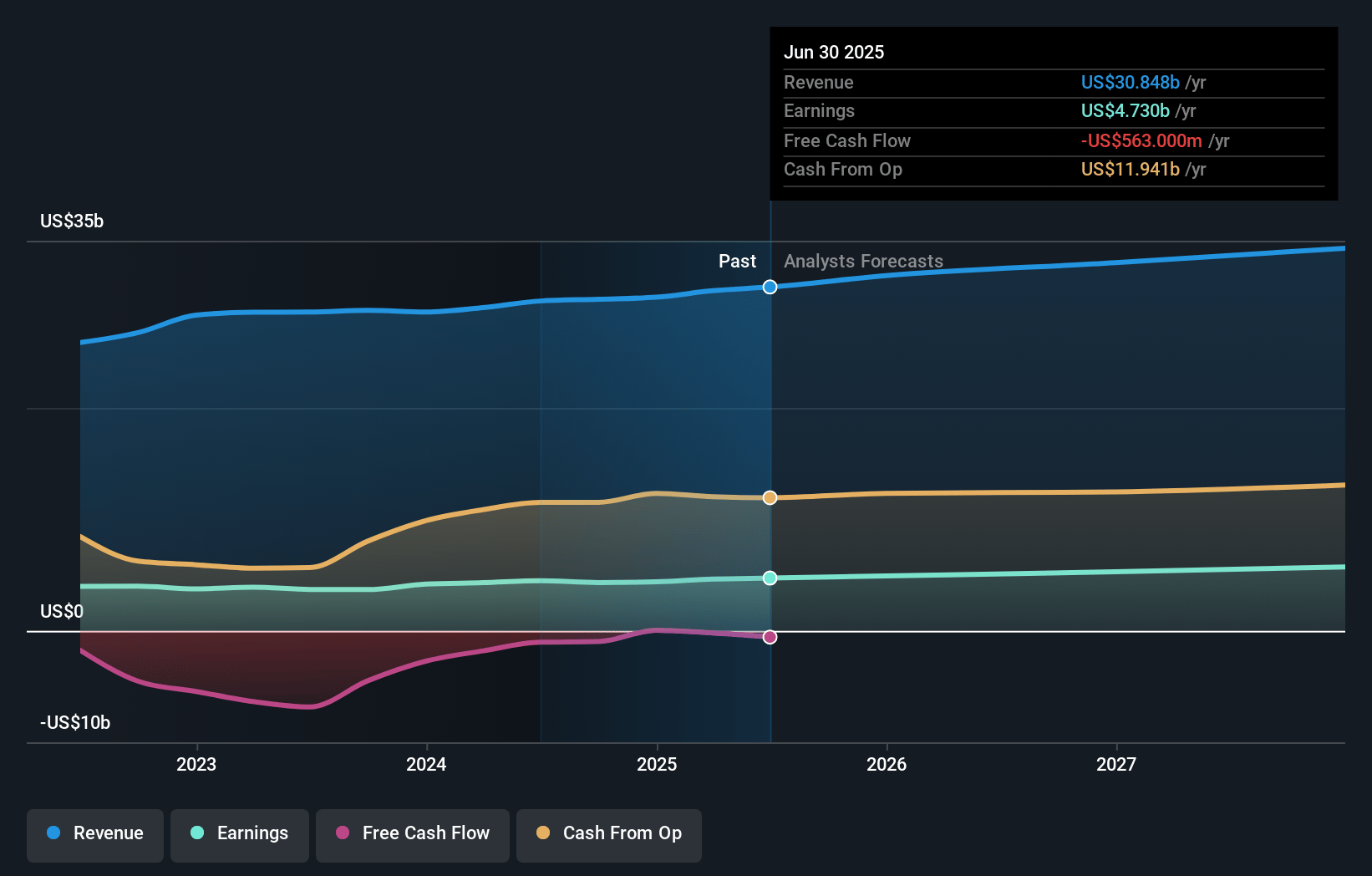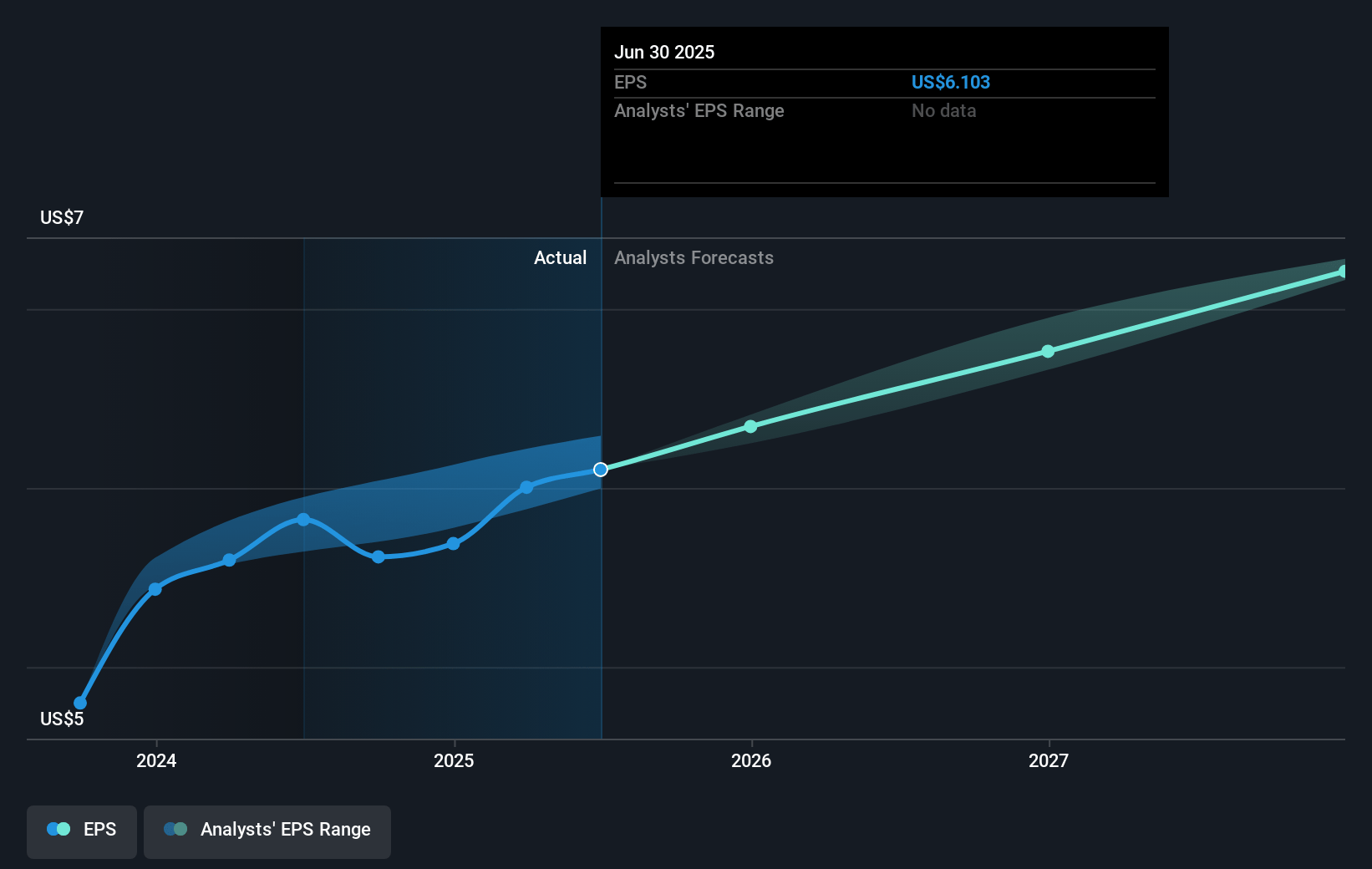Key Takeaways
- Load growth and constructive regulatory outcomes are expected to bolster revenue and earnings stability through infrastructure investments and favorable rate adjustments.
- Strategic partnerships, mergers, and extended nuclear licenses aim to boost operational efficiency, reduce costs, and enhance long-term financial stability.
- Regulatory changes, economic uncertainty, increased expenses, supply chain dependence, and merger execution risks could impact Duke Energy's costs, revenues, and earnings.
Catalysts
About Duke Energy- Through its subsidiaries, operates as an energy company in the United States.
- Significant load growth is anticipated, driven by economic development projects and increased demands, which is expected to bolster revenue growth through accelerated infrastructure investments and increased power volume sales.
- The approval to extend the operating license for the Oconee Nuclear Station by 20 years and potential similar extensions for other nuclear reactors are expected to contribute to stable, long-term revenue with reduced capital expenditure compared to building new plants. This will also enhance earnings through increased operational efficiency.
- Strategic partnerships and agreements, such as the one with GE Venova for natural gas turbines, facilitate timely infrastructure investments to support future demand, potentially increasing revenue and maintaining operational excellence.
- The proposed merger of DEC and DEP utilities is expected to result in significant cost savings, simplified operations, and increased operational flexibility, which could improve net margins and provide financial stability for future growth.
- Constructive regulatory outcomes, including storm cost recoveries and new rates, are anticipated to contribute positively to cash flow and earnings stability, supporting Duke Energy's financial strength and ability to execute on growth initiatives.
Duke Energy Future Earnings and Revenue Growth
Assumptions
How have these above catalysts been quantified?- Analysts are assuming Duke Energy's revenue will grow by 4.7% annually over the next 3 years.
- Analysts assume that profit margins will increase from 15.2% today to 16.8% in 3 years time.
- Analysts expect earnings to reach $5.9 billion (and earnings per share of $7.28) by about July 2028, up from $4.6 billion today.
- In order for the above numbers to justify the analysts price target, the company would need to trade at a PE ratio of 20.7x on those 2028 earnings, up from 20.2x today. This future PE is lower than the current PE for the US Electric Utilities industry at 22.0x.
- Analysts expect the number of shares outstanding to grow by 0.65% per year for the next 3 years.
- To value all of this in today's terms, we will use a discount rate of 6.43%, as per the Simply Wall St company report.
Duke Energy Future Earnings Per Share Growth
Risks
What could happen that would invalidate this narrative?- Regulatory changes or unsupportive legislation, particularly regarding nuclear tax credits and transferability, could impact Duke Energy's ability to keep operational costs low and affect margins.
- Economic uncertainty and potential changes in industrial production levels from significant increases in tariffs could affect electricity demand, impacting revenue.
- Increased interest expenses and depreciation might offset revenue and earnings gains from higher sales volumes and new rates, potentially squeezing net margins.
- Dependence on strategic partnerships and supply chains, such as the agreement with GE Venova for turbines, could pose risks if there are disruptions or cost increases, impacting future capital expenditures and revenue.
- The anticipated merger of DEC and DEP utilities, while potentially offering long-term savings, involves execution risks and regulatory hurdles, which, if not met, could affect anticipated operational and cost efficiencies, impacting net earnings.
Valuation
How have all the factors above been brought together to estimate a fair value?- The analysts have a consensus price target of $127.477 for Duke Energy based on their expectations of its future earnings growth, profit margins and other risk factors. However, there is a degree of disagreement amongst analysts, with the most bullish reporting a price target of $142.0, and the most bearish reporting a price target of just $117.0.
- In order for you to agree with the analyst's consensus, you'd need to believe that by 2028, revenues will be $35.0 billion, earnings will come to $5.9 billion, and it would be trading on a PE ratio of 20.7x, assuming you use a discount rate of 6.4%.
- Given the current share price of $120.73, the analyst price target of $127.48 is 5.3% higher. The relatively low difference between the current share price and the analyst consensus price target indicates that they believe on average, the company is fairly priced.
- We always encourage you to reach your own conclusions though. So sense check these analyst numbers against your own assumptions and expectations based on your understanding of the business and what you believe is probable.
How well do narratives help inform your perspective?
Disclaimer
AnalystConsensusTarget is a tool utilizing a Large Language Model (LLM) that ingests data on consensus price targets, forecasted revenue and earnings figures, as well as the transcripts of earnings calls to produce qualitative analysis. The narratives produced by AnalystConsensusTarget are general in nature and are based solely on analyst data and publicly-available material published by the respective companies. These scenarios are not indicative of the company's future performance and are exploratory in nature. Simply Wall St has no position in the company(s) mentioned. Simply Wall St may provide the securities issuer or related entities with website advertising services for a fee, on an arm's length basis. These relationships have no impact on the way we conduct our business, the content we host, or how our content is served to users. The price targets and estimates used are consensus data, and do not constitute a recommendation to buy or sell any stock, and they do not take account of your objectives, or your financial situation. Note that AnalystConsensusTarget's analysis may not factor in the latest price-sensitive company announcements or qualitative material.









